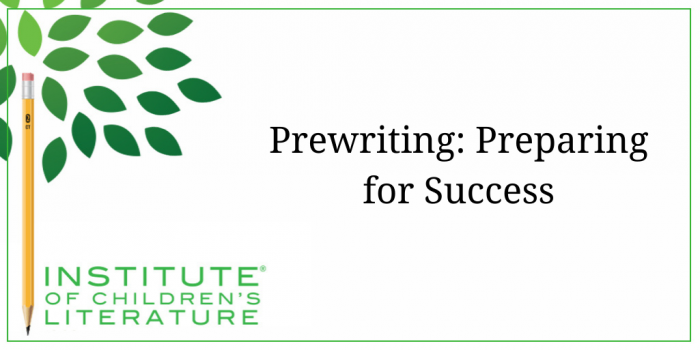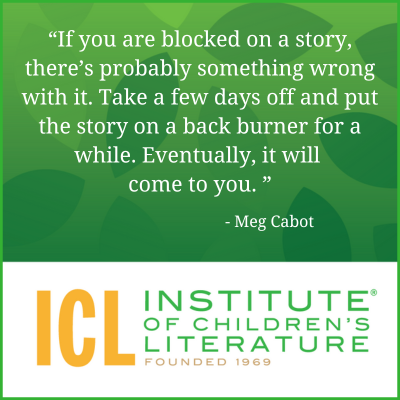1000 N. West Street #1200, Wilmington, DE 19801
© 2024 Direct Learning Systems, Inc. All rights reserved.

Planning a story or book can seem very counterintuitive to some writers who prefer a very organic process of simply sitting down and facing a blank page (or empty screen).

In my own career, I have written short fiction and some nonfiction that way. But mostly I do a certain amount of prewriting before I begin my first draft. The prewriting helps me avoid blocks once I’m halfway through the piece. But not all prewriting is the same.
Let’s talk about how each of these can work.
When I outline a fiction book, I’m basically writing a blurb for each chapter of the book that covers what the chapter will accomplish, which scenes it will contain, how much time will be encompassed in the chapter action, and how the chapter will lead the reader into the next chapter. Whether I’m doing an early chapter book or a full-length mystery novel, every chapter is required to accomplish something connected to the plot. It must bring a sense of forward momentum.
In a mystery, my outline will let me know what clues will be uncovered in the chapter and where those clues need to turn up. In my early chapter books, each chapter will push my characters deeper and deeper into trouble until the time comes for them to dig themselves back out of trouble.

I also like to bold character names so I can see how often each character appears in the book. This can show me when characters feel too convenient, such as the character who steps into the story just to inject information or to give my main character wise advice. These kinds of characters can be signs of weak plotting or insufficient motivation for my main character behavior.
The end of a chapter can be a dangerous thing. If the chapter sputters to an end, you can lose the poorly engaged reader who sets the book aside in favor of more appealing activities. Because of this, I always try to end my chapters with something to motivate the reader to continue. Curiosity is a great motivation for readers, so my chapter endings often inject some kind of unexpected happening or mysterious question to keep the reader engaged. This kind of chapter ending is often called a “cliffhanger” because action and mystery novels often imperil characters at the chapter endings to grab reader interest. But any ending that stirs reader curiosity can make a good bridge to the next chapter. So can a witty bit of internal dialogue from the main character that makes the reader laugh. An amused reader is rarely quick to put down the book.
Another reason I like chapter outlines is that it speeds up the writing of the actual book and keeps the book from lagging in the middle. I’m never stuck wondering what should come next. But the chapter outline isn’t the only way to approach prewriting.
When I’m writing something shorter than a chapter book, my prewriting is often done entirely in my head. I’ll tell myself the story I’m planning to write. This kind of prewriting is often done while I’m engaged in an activity that leaves my mind free to create. I’ll do this internal storytelling while cleaning or taking a shower or going for a walk. I also do this kind of prewriting when I’m in bed, settling down to sleep.

There is one thing to beware of with this storytelling style of prewriting. You really need to know when to stop rehearsing it in your head and begin getting it on paper.
Telling yourself the story over and over can drain away some of the energy and enthusiasm for the story. This is especially true if you give in to the temptation to tell someone else about a story you have in your head. The act of sharing the story with another person often fulfills my need to create it and the story never ends up being written at all. So if you do your prewriting in your head, be careful you don’t end up skipping the important step of actually writing.
Some books are less about the specific unfolding of actions than they are about the characters themselves. In a character driven story, an outline may not be the best type of prewriting. Instead, you may want to begin by getting to know your characters in a deep way.

All of these feelings and motivations and habits work together once I throw in a story problem. If I have cast my story with a character who has a morbid fear of germs and a passion for memorizing poetry, that person is going to deal very differently with a story problem than a character who is always in trouble for being too loud and has a secret collection of dead bugs. When you know your characters deeply, the story will virtually plot itself once you throw in a good story problem.
You will, however, need to throw in that very specific story problem. Characterization alone is not enough to drive a novel. Your characters also need a specific problem to deal with. For instance, suppose I create a young character who is artistic and sensitive and passionate about animals. And I give that character a parent who is very goal oriented, blunt, and who wants everything to be neat and clean all the time. These two characters would logically come into conflict a lot. But to make a good novel, I would need to come up with a clear, specific, problem that used that conflict to build a story.
For example, what if that sensitive, artistic child were invited to paint a mural on the wall of the local animal rescue. But his parent thinks such a project would be a waste of time, time that could be better spent studying. Now imagine that child desperately wants to do that mural. He wants it so much that he simply cannot walk away from the opportunity. In that situation, you would find a story. It would be a story that grows out of a lifetime of conflict between these characters, but it would also be a very specific story about a boy and his art and how it all came to a turning point when he was invited to do that mural.
So however you do your prewriting, it’s time well spent. Whether you go for the very detailed outline or you only poke at the story in your head before you begin, or you spend your prewriting time getting to know your characters, your setting, and your time period, the act of prewriting smooths the creative bumps and lets the story flow.
With over 100 books in publication, Jan Fields writes both chapter books for children and mystery novels for adults. She’s also known for a variety of experiences teaching writing, from one session SCBWI events to lengthier Highlights Foundation workshops to these blog posts for the Institute of Children’s Literature. As a former ICL instructor, Jan enjoys equipping writers for success in whatever way she can.
1000 N. West Street #1200, Wilmington, DE 19801
© 2024 Direct Learning Systems, Inc. All rights reserved.
1000 N. West Street #1200, Wilmington, DE 19801
© 2024 Direct Learning Systems, Inc. All rights reserved.
1000 N. West Street #1200, Wilmington, DE 19801
© 2024 Direct Learning Systems, Inc. All rights reserved.
1000 N. West Street #1200, Wilmington, DE 19801
© 2024 Direct Learning Systems, Inc. All rights reserved.

1000 N. West Street #1200, Wilmington, DE 19801
© 2025 Direct Learning Systems, Inc. All rights reserved.

1000 N. West Street #1200, Wilmington, DE 19801
©2025 Direct Learning Systems, Inc. All rights reserved. Privacy Policy.
2 Comments